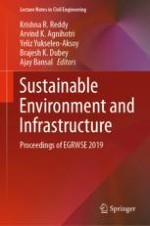2021 | OriginalPaper | Chapter
Strength Properties of Coffee Waste Based Geopolymers
Authors : Tugba Eskisar, Selim Altun
Published in: Sustainable Environment and Infrastructure
Publisher: Springer International Publishing
Activate our intelligent search to find suitable subject content or patents.
Select sections of text to find matching patents with Artificial Intelligence. powered by
Select sections of text to find additional relevant content using AI-assisted search. powered by
